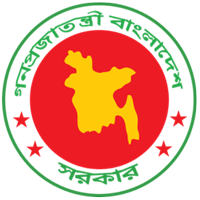In Bangladesh, where every child’s health counts, innovation is reshaping the way vaccines reach communities. Since the launch of the Expanded Programme on Immunization (EPI) in 1979, Bangladesh has seen full immunisation coverage rise from a modest 2% to over 60% by 1990—a remarkable journey built on dedication, community outreach, and evolving strategies.
To further strengthen its approach, Bangladesh has now embraced Geo-enabled Digital Microplanning, a cutting-edge tool using Geographic Information Systems (GIS) to map, plan, and monitor immunisation services with unprecedented precision.
Introduced with technical support from the World Health Organization (WHO), and in coordination with the National EPI, MIS, and key partners like UNICEF, PATH, and HiSP, this initiative builds on earlier strategies like Reach Every District (RED) and Reach Every Community (REC), while addressing long-standing challenges in mapping hard-to-reach and underserved populations.
Traditionally, health workers relied on hand-drawn maps during vaccination sessions. While data entry was already digital, paper-based planning limited accuracy—particularly in identifying catchment areas and households with zero-dose or under-immunised children. Now, through ArcGIS-powered planning, EPI teams can:
- Identify unvaccinated communities,
- Map vaccination sites and outreach catchments,
- Analyse travel distances to facilities, especially in remote or riverine areas,
- Track performance and service coverage in real-time.
This shift ensures that vaccines like BCG, DPT, and Pentavalent—crucial for protecting children from preventable diseases—are delivered more effectively, even in the most challenging corners of the country. After a successful 2023 pilot in Rajshahi and Mymensingh City Corporations and two other regions, the GIS-enabled system is now scaling up across 29 districts and 4 city corporations. A live dashboard hosted on the DGHS portal helps visualise immunisation data, supporting faster decisions by national and local authorities.
This dashboard integrates multiple data points—from adverse event reporting and vaccine-preventable disease (VPD) surveillance to health worker supervision and service quality. The result: a smarter, more responsive system that ensures no child is left behind. GIS mapping is not just about technology—it’s about equity. By visualising underserved zones, planners can allocate resources more strategically, schedule outreach visits more efficiently, and close the immunisation gap for zero-dose children.
This is especially important for areas with scattered or migratory populations, such as river islands and urban slums, where paper-based planning often missed entire clusters of families. With training and capacity building underway, health workers are becoming adept at using these digital tools—bringing spatial intelligence into everyday immunisation planning.
Geo-enabled digital microplanning is a quiet revolution—using smart maps to protect young lives. It aligns perfectly with the mission of reducing zero-dose and under-immunised children in Bangladesh, and represents a bold step toward universal immunisation coverage. Bangladesh is proving that with innovation, commitment, and the right data, vaccines can reach every child, everywhere.
Reference:
Geo-enabled digital microplanning: revolutionizing immunization in Bangladesh. Technet-21.org. [cited 2025 Jul 16]. Available from: https://www.technet-21.org/en/community/blogs-newsletters/geo-enabled-digital-microplanning-revolutionizing-immunization-in-bangladesh










